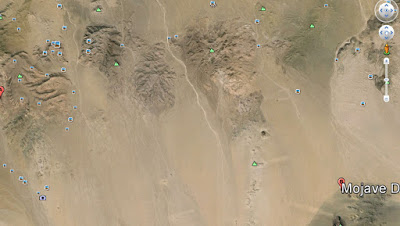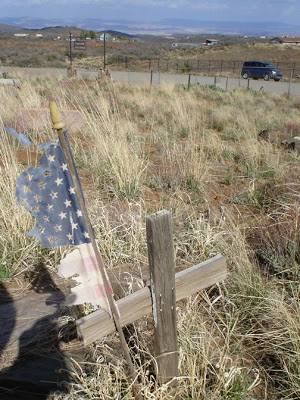

| Online: | |
| Visits: | |
| Stories: |

| Story Views | |
| Now: | |
| Last Hour: | |
| Last 24 Hours: | |
| Total: | |
Mysterious Ship in the Desert
Perhaps one of the more unusual legends, but persistent, is that of an abandoned ship in the desert.
Native People, Spanish explorers, prospectors and migrant workers have been among the witnesses over hundreds of years, reporting a ship in the California desert (between the Salton Sea and the delta of the Colorado River).
Trying to explain such an occurrence has been fraught with unusual explanations. One such tale is that there was a Spanish vessel loaded with gold that was in the Gulf of California and there was a tidal bore that moved the ship forward over the land and left it crashed into the sand.
Where is it now and why haven't we seen it? Well, the most ready explanation is that shifting sands in that area have covered it over, and at times exposed it again. Perhaps, some day a Google Earth image might capture it just as it's exposed.
Some explanations in the various versions of the story included; Noah's Ark, Viking ship, Spanish Galleon, and a pirate ship.
Legends are interesting things. There is usually some event that precipitated it, but on the telling, it changed over time. Might a ship have been abandoned in the desert? It's certainly possible that under certain conditions, a ship did wash into the area, but would have taken a rather exceptional condition that does not seem to exist today, as we do not have ships going aground in the Colorado River delta.
Source: Tales of a Spanish galleon lost in the sands of the Colorado Desert keep recurring, from an amazing variety of sources. One of the most persistent made the pages of the Los Angeles Star in 1870. It seems that hundreds of years ago, when the waters of the Gulf of California came up into the desert, a pirate ship sailed up the Gulf. It was caught in some cross currents and went aground on a sand bar. The crew died, and the ship was left stranded there with almost a million doubloons and pieces of eight in her hulk. It's only when the wind blows and the sand clears that you can get a good look at her, and then the same wind comes along and covers her up again. The Star locates the wreck about ten miles from Dos Palmas. The newspaper gives a graphic description of the time when the Gulf occupied the entire valley, and, in fact, connected up with the Pacific Ocean through San Gorgonio Pass and Los Angeles. The Star did a series of articles speculating that the ship might have been one of the units of King Solomon's navy, or the craft that carried the ten lost tribes of Israel to America; and for the latter offered proof that the tribes never reached America but died of diptheria in the Sandwich Islands! Another idea advanced was that a war-like people from the Indian Sea took a tempestuous voyage to the Gulf of California. Here their ship, Bully Boy, sank in treacherous quicksands. Her hull was made of teakwood and did not rot. The Digger Indians of California are descendants of this Shoo-fly tribe.
Is there a ship in the desert? It is entirely possible that, under the right conditions in the past, there was one in the sand, but shifting sands, hundred-year floods and more might have completely destroyed the evidence. One thing I know about wood in the desert – it does not hold up well to time -
Still, I suspect when I drive through that region on my road treks to abandoned locations, I will be certainly taking my binoculars and giving it a good once-over.
More info:
DesertUSA
Ancient Lost Treasures
Source: http://www.ghosthuntingtheories.com/2016/02/mysterious-ship-in-desert.html






You have interesting stories Sharon as nothing is what most believe it to be…
the ship was a pearl galleon and when first found some of the timbers were used for the railroad that was near the site, this is well documented to be real! never did get any info IF any treasure was recovered or not, that part has ALWAYS been unknown
the first people to find the ship after it was ‘lost’ got the booty. if it wasn’t removed by the
original sailors.
Not too different than the tales of the Spanish Conquistadors who traveled from Central Mexico to the Pacific Coast in the 15th century, carrying caravans of gold from the Mayan and Aztec cultures with them. There are actually maps online that show the historic routes these caravans took, as they headed for the newly settled ‘Spanish Coast’ areas to sail their goods back from. Many claim that there were caves used along the paths to rest for the night, and that more than once was a cave location lost or forgotten about, and that some treasure was often left behind as a means of lightening a load to help the ‘unexpecting’ when the desert became too hot, or they didn’t have enough water. Some even speculate that this is actually what the ‘Lost Dutchman’ actually found when he found the ‘Lost Dutchman Mine’ in Arizona, a cave of the Conquistador’s gold, not a natural deposit.